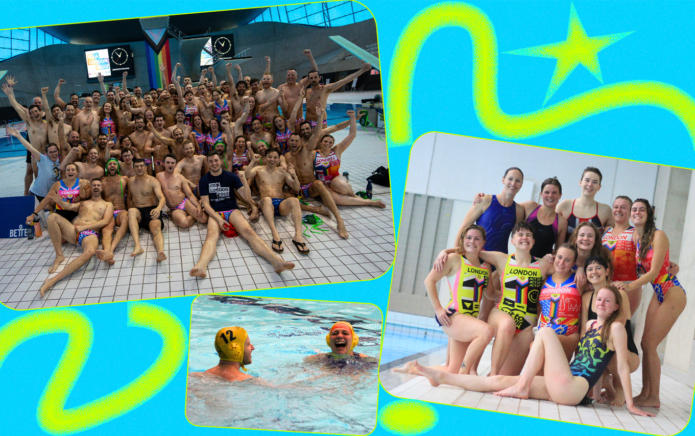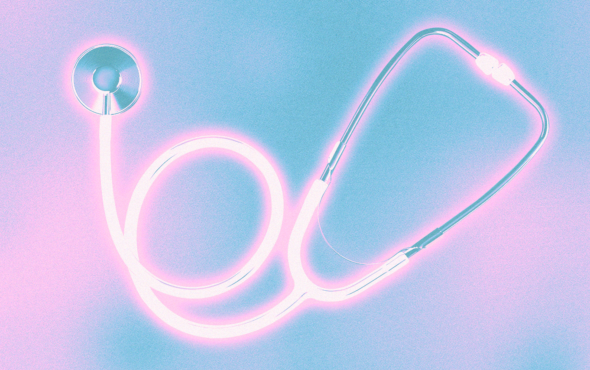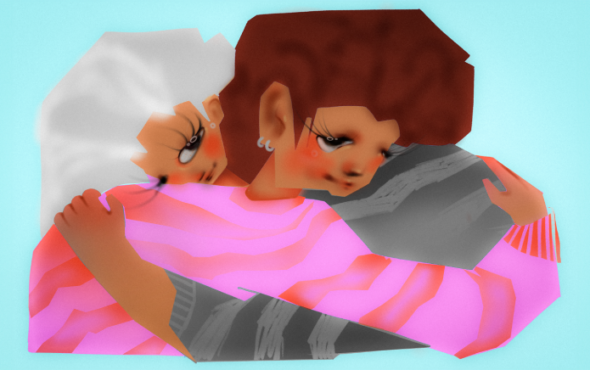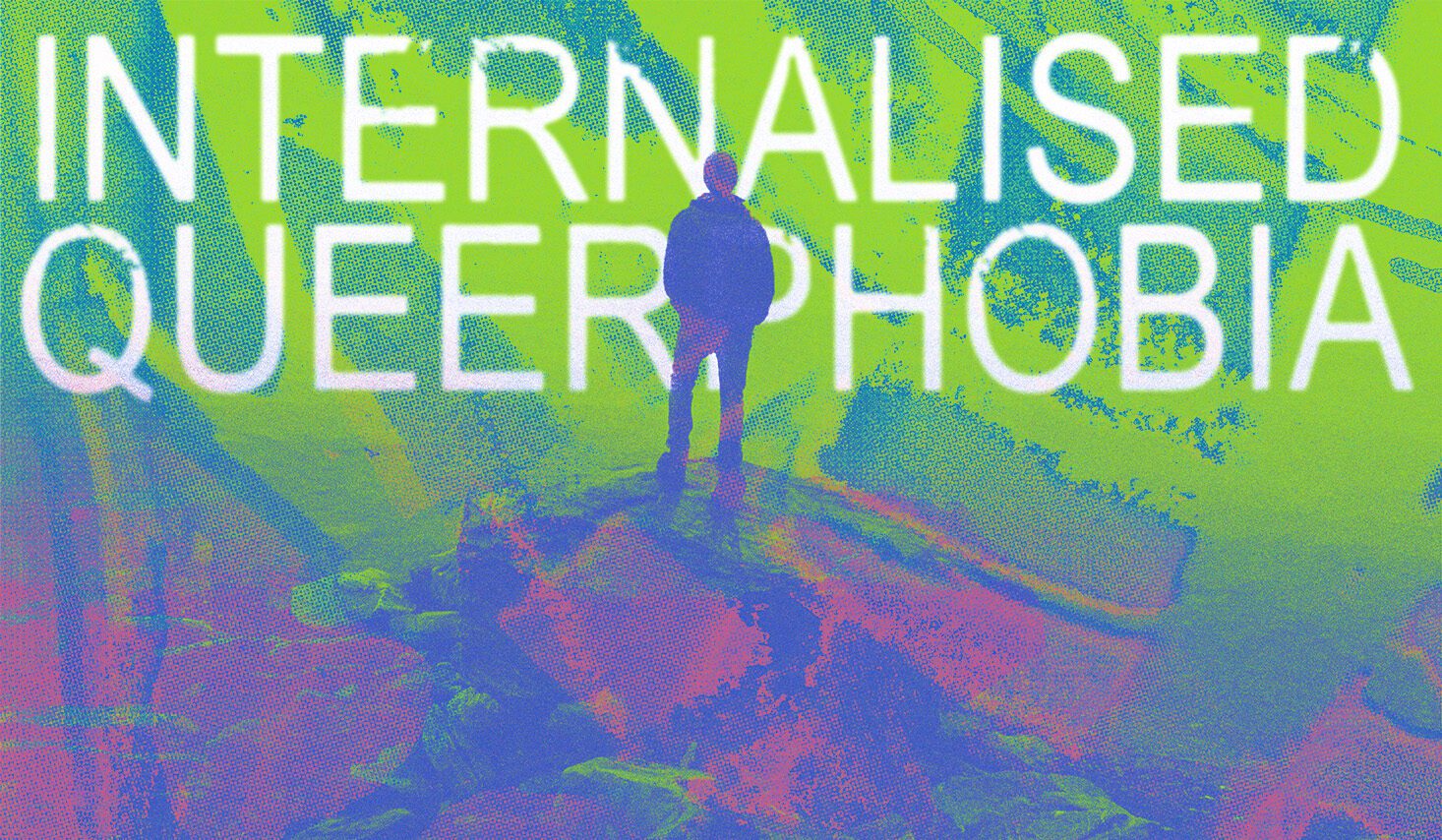
Over the past decade, conversations around LGBTQ+ mental health, wellness and our ability to look out for our own community in new and emotionally intelligent ways has meant vast improvements in the wellbeing of LGBTQ+ people across the UK, and the world. But despite this seismic shift in conversation, many of us still live with a silent yet potent force within our lives as queer people: internalised queerphobia.
Whether it be homophobic, transphobic, biphobic, lesphobic or queerphobic, we want to unpack just what internalised queerphobia can look like, how you can spot it in yourselves and other people, and what it looks like to overcome the legacy of shame that is so often not our fault in the first place.
What does it mean to have an ‘internalised’ queerphobia?
As a society, prejudicial and phobic language or actions towards the LGBTQ+ community are often delivered in a subversive and blanket manner, meaning that as young people we are raised in a society that doesn’t always showcase LGBTQ+ lives as being free, joyous, or even an option. In schools, the workplace, TV and film, across our news and even across social media, heterosexism thrives.
Heterosexism is a system of attitudes, bias, and discrimination in favour of female–male sexuality and relationships, based upon the belief that heterosexuality is the only normal and natural expression of sexuality.
Over time, this can become an internalised belief that sits within us, emanating from ourselves. The lack of positive representation and often negative depictions of LGBTQ+ life can create a correlation with queerness as being ‘bad’, ‘weak’ or even ‘punishable’.
Internalised queerphobia is when we feel this way within ourselves, even if we are LGBTQ+. It’s the after effects of living within a queerphobic home environment, or friend group, or just as an LGBTQ+ person existing in wider society. This can manifest within ourselves as shame – leading to behaviours that feed off shame, such as having a negative self-image and bullying as well as being linked to addiction and self-harm.
What is the impact of internalised queerphobia?
It’s important to acknowledge that internalised views that are LGBTQ-phobic impact ourselves as well as having an impact on those around us, both physically and mentally. As Just Like Us Ambassador Millie shared with GAY TIMES, it can manifest itself in traits such as perfectionism.
“I always felt like I had to work harder at my studies, be fitter and achieve more than straight people to ‘make up’ for my deviation from this societal norm. Subconsciously, I believed that if I got good grades, was smart, social, and physically fit enough, this would ‘compensate’ for my gayness. Looking back, I realise I put pressure on myself to overachieve because I felt like being gay was a failure in society’s eyes.”
If we see ourselves with disregard, or if we have a very low sense of self-worth or self-esteem then the way that we interact with the world isn’t always going to come from a place of love and protection.
According to The Rainbow Project, an LGBTQ+ charity helping to improve the physical, mental and emotional health of LGBTQ+ people in Northern Ireland, internalised homophobia, biphobia or lesphobia can manifest itself in ways impacting mental health. These include:
- Engaging in obsessive thinking and/or compulsive behaviours
- Shame or depression; defensiveness; anger or bitterness
- Unsafe sexual practices and other destructive risk-taking behaviours-including risk for HIV and other STIs
- Separating sex and love, or fear of intimacy; sometimes low or lack of sexual drive or celibacy
- Contempt for those that are not like ourselves or contempt for those who seem like ourselves; sometimes distancing by engaging in homophobic behaviours – ridicule, harassment, verbal or physical attacks on other LGBTQ+ people
- Substance abuse, including drink and drugs
- Becoming psychologically abused or abusive or remaining in an abusive relationship
In more serious cases, internalised queerphobia has been linked to Intimate Partner Violence (IPV) according to the Human Rights Campaign. With a low sense of self-worth, many LGBTQ+ people can become accustomed to the violence that they may face in relationships, feeling like they deserve it or that it is ‘punishment’ for their sexual or gender identity.
The Crown Prosecution Service in the UK has also identified internalised homophobia, biphobia and transphobia as important evidential considerations to be made during cases of sexual or domestic violence.
In new guidance that was published in 2021 aiming to demystify myths and stereotypes that existed surrounding same-sex sexual violence, internalised homophobia/biphobia and/or transphobia is listed as a piece of information that should be taken into account.
In the case of sexual violence involving trans people, the guidance states:
“Trans people rarely report sexual (or any other) violence for a number of reasons, including: internalised transphobia leaving people with low self-esteem and a sense that they do not deserve better; fear of not being believed or not being taken seriously; mistrust of the criminal justice system; fear of encountering transphobia from criminal justice agencies; fear of being outed.”
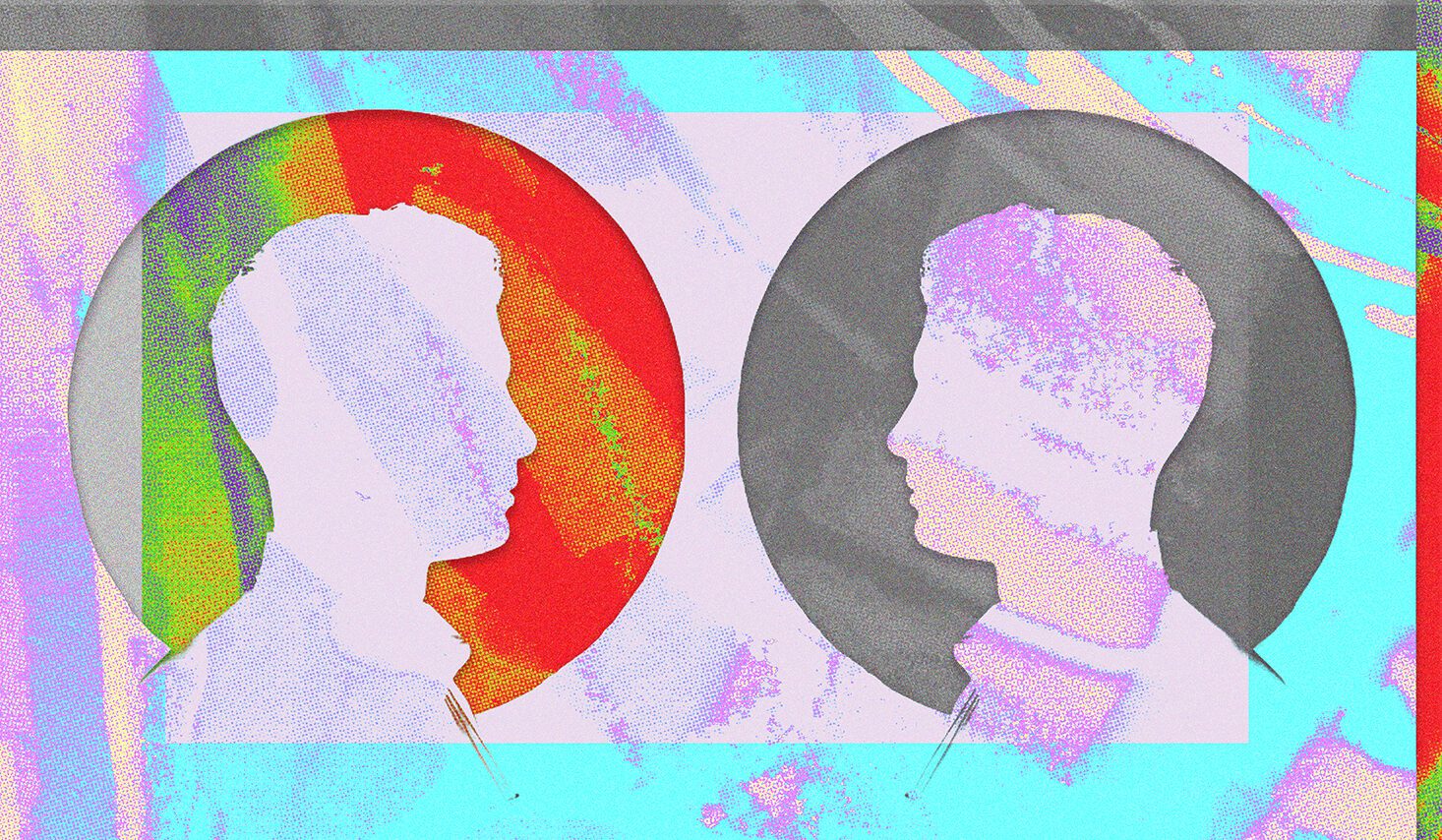
Does it just impact LGBTQ+ people?
Due to the nature of LGBTQ-phobic language and heterosexism shared across mainstream media and throughout Parliament, everybody is aware and is able to absorb this prejudicial rhetoric no matter how they identify. Therefore, people who self-identify as straight or cisgender can experience internalised queerphobia, as the very notion of exploring one’s sexual or gender identity might not even look like an option to them, despite a potential desire deep down to explore it.
What can we do about it?
Like many mental health conditions or emotional difficulties that we face in our lives, the work has to be done within ourselves first to therefore reap the benefits both internally and externally within society. To avoid the continuation of violence, shame, misery and prejudice that many LGBTQ+ people face, it’s important that we address any internalised queerphobic narratives that may still exist within us.
But what can we do about it?
It’s not going to be an overnight fix, and many identify that it can take a lifetime of consistent, gradual work to be able to overcome the impact internalised queerphobia can have on us.
A video from YouTube creators Alexis and Lilian, a queer couple documenting their life together online, shows a real insight into the path that LGBTQ+ people go on to overcoming their own internalised homophobia.
One detail they share is about being gentle with ourselves. One of the most important things to remember when it comes to dealing with this issue is that it isn’t our fault that we have these beliefs about ourselves, or about others within our community. It is however our responsibility to do something about them if they rear their head within our lives and cause us to act negatively towards ourselves or others.
Many identify that it can take a lifetime of consistent, gradual work to be able to overcome the impact internalised queerphobia can have on us.
They also identify the following top tips for overcoming internalised queerphobia:
- Acknowledgement: Identifying with yourself that you are feeling these feelings is completely OK. It doesn’t make you a bad LGBTQ+ person – in fact, it’s a testament to your ability to want to grow and be a better person that you’re able to identify you may feel internalised queerphobia.
- Distance: Having time away from people who may believe in anti-LGBTQ+ rhetoric isn’t always easy and can come with challenges, but it’s important in whatever way you can to try and create distance. This can be people, including friends or work colleagues, or even media outlets, social media accounts or news sites that often share queerphobic content.
- Role Models: Finding affirming, supportive and aspirational role models within your life that are LGBTQ+ can be one of the most important things to do for your self-esteem. Being able to see someone living their life authentically as an out LGBTQ+ person can provide us with hope that we can do the same.
- Therapy: Speaking with a therapist about your internalised queerphobia is a great way to rid yourself of the very shame that is sitting inside of you. There is a freeing feeling of being able to share the often uncomfortable things that internalised queerphobia has to say, in a safe, controlled and private environment.
- Chosen Family: Ensuring you have a support network around you that is LGBTQ+ friendly is imperative to overcoming internalised queerphobia. It’s not always easy, especially as these spaces can mean we are confronted with our internalised queerphobia head on. However, finding your own space where you can create meaningful connections is a great step to overcoming the problem. It doesn’t have to be in nightlife too – whether it be sports, reading, art or running, finding your chosen family can always be tailored to your own interests.
It’s not a life sentence. Understanding just what internalised queerphobia looks like and how it can manifest in your life is a big challenge. But our ability to explore this concept and work through it for the greater good is a testament to our desire to live in a more free and accepting world.
Remember, this isn’t our fault. We are merely pushing through and doing our best in a world that persecutes LGBTQ+ people for daring to exist. Hopefully in the decades ahead, internalised queerphobia will be something of the past, as proof that we have been able to show young people in 2023 that LGBTQ+ lives are something to be celebrated and loved, no matter what.
For more information, find resources below:
The Rainbow Project – Shout24/7 – Mind Out – Just Like Us – London Friend
